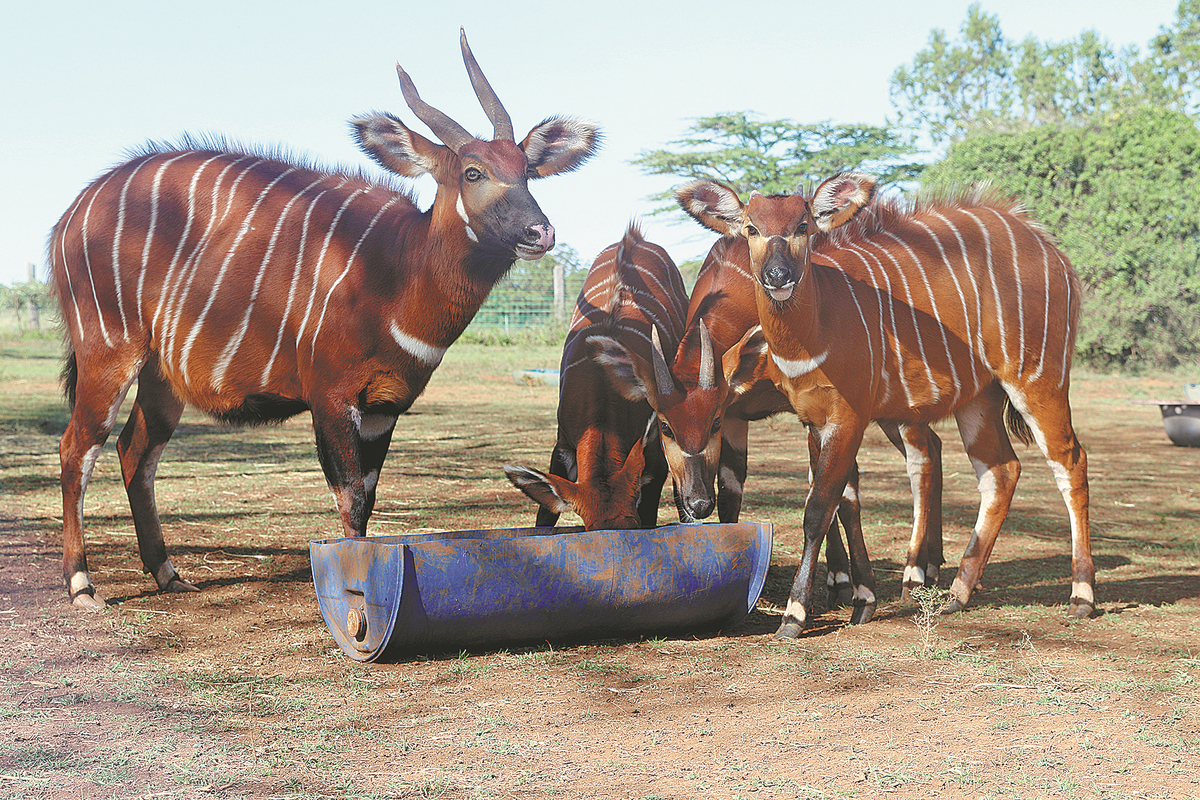Efforts paying off to save endangered antelope in Kenyan forests
By OTIATO OPALI | China Daily | Updated: 2022-11-02 07:13

The mountain bongo antelope, one of the world's most endangered animals, is likely to continue roaming in the wild of Kenya for longer due to intensified efforts to protect it from extinction.
Following 18 years of conservation efforts, staff members from the Mount Kenya Wildlife Conservancy reached a milestone this year — the first baby mountain bongo born in the wild.
One of the world's most unique animals, the mountain bongo is the largest, heaviest and most colorful of the forest antelopes in Africa. Endemic to equatorial forests and only found in Kenya's wild, this species has seen a dramatic decline in numbers in the last few decades from an estimated population of 25,000 to less than 100, according to a recent wildlife census in Kenya.
Before the beginning of this decline in the 1960s, these critically endangered animals once roamed freely in Kenya's high-altitude forests of the Aberdares, Mount Elgon and Mount Kenya. Its population decline was primarily human-driven.
To reverse the decline, the Mount Kenya Wildlife Conservancy has geared up efforts in partnership with the Kenyan government to save the mountain bongo from extinction through a breeding and rewilding program.
Robert Aruho, head of Mount Kenya Wildlife Conservancy, said its aim is to restore Kenya's heritage species.
"As we speak, the mountain bongo antelope has suffered massive decline and we are left with less than 100 of the species in the wild. What makes this animal special is that it is only found in the wild in Kenya and its decline in this area therefore means its decline in the world," said Aruho, adding that the animal is believed to be extinct in most of its natural habitats.
"We started the mountain bongo restoration program in 2004 to reverse the tide of the extinction of this species. We had to start our breeding program with animals from the zoos after importing 18 mountain bongos in addition to the ones we had in our orphanage.
"Our program has taken the animals through a series of adaptation measures to enable them to acclimatize to life in the wild as opposed to zoos. This involved getting used to local food and adopting to local parasites and diseases. This has enabled them to breed and produce offspring that are indigenous to this environment."
With the first phase of adaptation being complete, the conservancy has moved to the second phase which entails introducing the antelopes to the wild.
OTIATO OPALI in Nairobi, Kenya
























